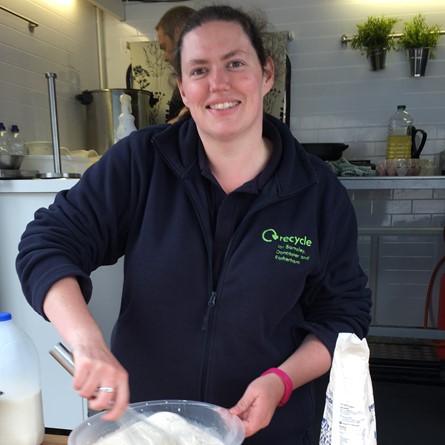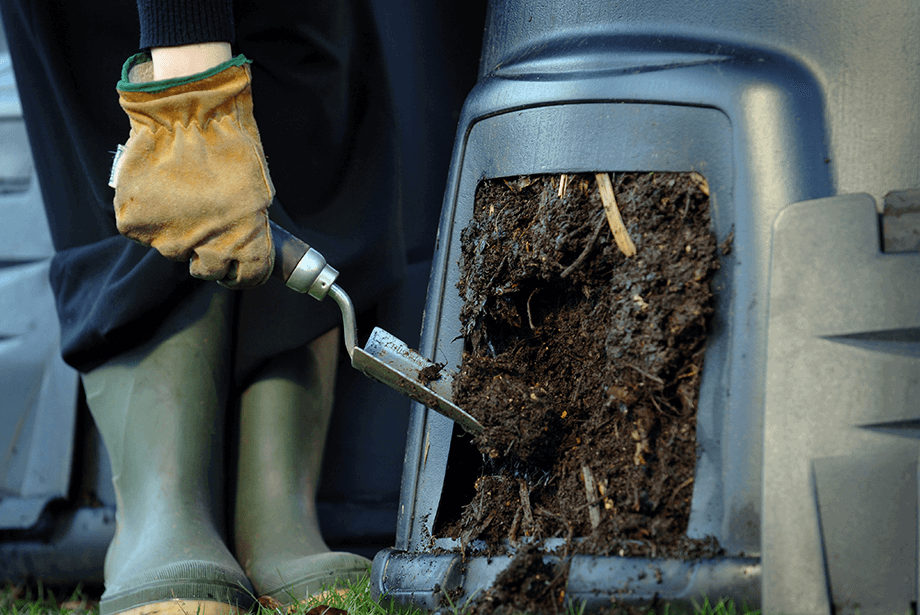A compost bin
They come in all shapes and sizes but the easiest way to start is with a plastic bin. These Dalek looking objects can be purchased at most DIY stores and online. They come in different sizes too so you can find one that is ideal for your garden.
If you don't have one of these bins, it doesn't matter as you can still make a compost heap at home.
Find out more about the different methods of home composting here.
Location, location, location
Next you need to place your compost bin in the right place in your garden. Even though they can be placed anywhere, our recommendations is that they are placed on bare soil in a sunny spot.
This makes it easier for all microbes and insects to gain access to the decomposing materials and improves aeration and drainage. The sunny spot allows the compost to heat up slightly and speeds up the process.
The perfect compost recipe
Putting the right materials in your compost bin is important to making the perfect compost.
You need a 50/50 mixture of ‘green’ and ‘brown’ materials.
Green materials are materials that quickly rot and provide the compost with nitrogen and moisture. Examples include grass cuttings, leaves and coffee grounds.
Brown Materials are materials that rot at a slower rate providing carbon and creating structure in the compost to allow air to flow through. Examples include cardboard, straw and autumn leaves
Please do not include any meats, fish, dairy, pet poo and nappies as they can attached unwanted pests.

Please also don’t include any plastics- even if they say they are compostable or made from bio-plastics. Find out why here.
Give it time
It takes about nine to 12 months for compost to become ready for use, so sit back and let nature do all the work! In the meantime, keep topping up the bin with your brown and green materials.
To speed up the process, you can turn your compost to allow more air into the mixture.
Once your compost is ready, it should be a dark, crumbly material that resembles thick soil.
Getting your compost out
Lift the bin slightly to get the compost out or open the hatch at the bottom and scoop out the compost with a garden fork, spade or trowel.
Where to use it
Your compost may be a little lumpy compared to store bought compost however, it is still safe to use all over the garden. You can use it on veggie patches, on your lawn, in plant pots or to enrich your boarders.
Find out more about where you can use your compost here
Want to know more about composting? Read more of our composting blogs here!
Follow our social media for more tips and tricks on composting or search #SouthYorkshireComposts
Originally posted 06/10/20 updated 19/04/21






